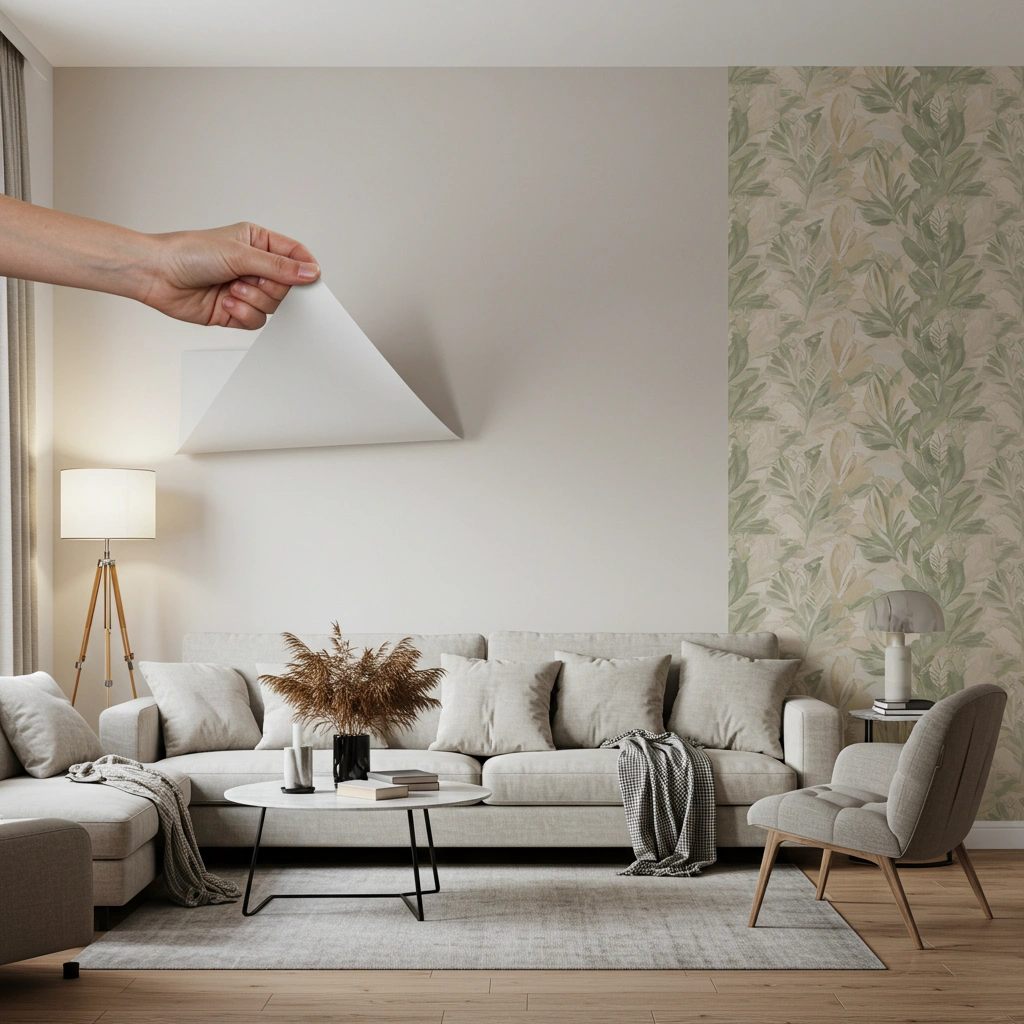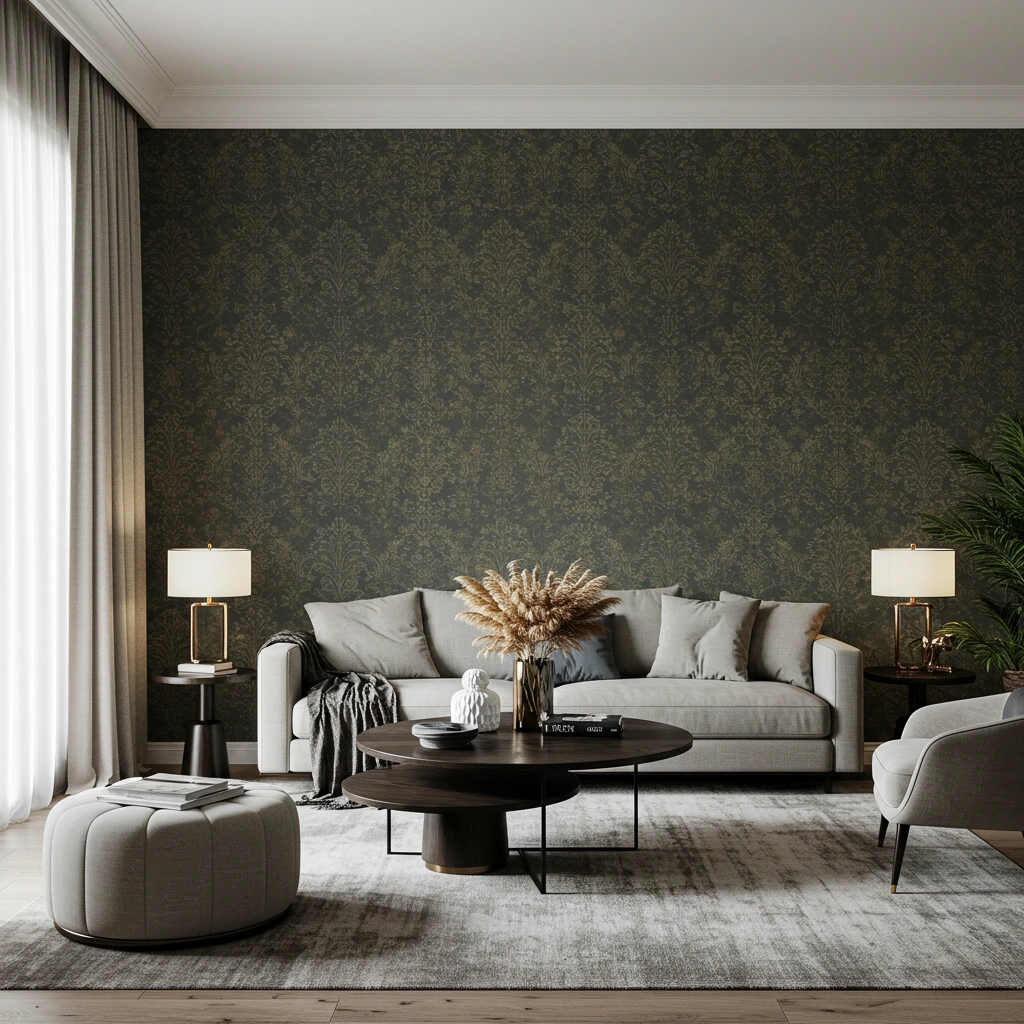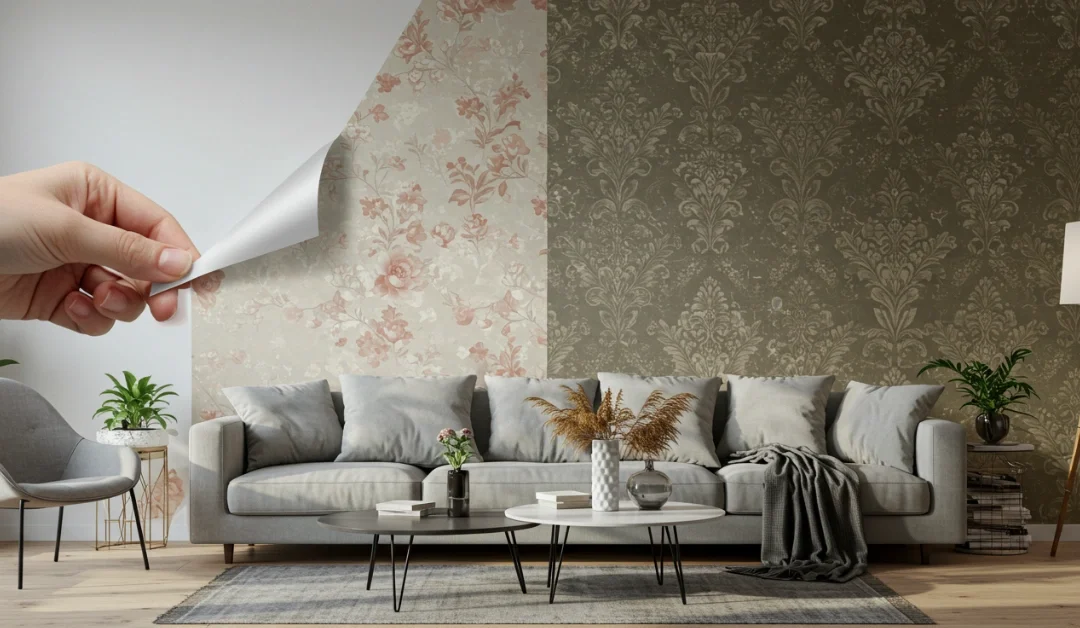Choosing the right wallpaper is like picking the best shoes for a long walk—it needs to feel good, look nice, and match your journey. Some homes require strong, lasting styles, while others may prefer frequent changes. Let’s explore which wallpaper fits your life!
1. What Is Removable Wallpaper – And How Does It Work?

Removable wallpaper is like a sticker for your walls. It sticks on easily and peels off without leaving marks. This type is great for renters or kids’ rooms, where changes are frequent. It’s made with a special glue that doesn’t harm paint or drywall.
If you want to try it, check out DIY wallpaper installation tips to learn how to stick it perfectly. For design ideas, accent wall inspiration shows how removable wallpaper can create bold focal points.
2. What Is Permanent Wallpaper – And Is It Still Relevant Today?
Permanent wallpaper is glued directly to walls and meant to stay for years. It’s like a favorite book—once you love it, it stays on the shelf. Many people still use it in living rooms or dining areas for a rich, classic look. Modern versions are thicker and can resist humidity better than older styles.
For a comparison between permanent wallpaper and paint, this guide dives into durability and style choices.
3. What Are the Key Differences Between Removable and Permanent Wallpaper?
| Sticky Power | Light (peels off easily) | Strong (hard to remove) |
| Lifespan | 1–3 years | 10+ years |
| Cost | Cheaper upfront | More expensive |
| Installation | DIY-friendly | Needs glue and skill |
| Texture Options | Limited (smooth finishes) | Wide range (grass cloth, embossed) |
| Eco-Friendliness | Often recyclable | Less eco-friendly due to adhesives |
For a deeper dive into textures, grass cloth vs peel-and-stick wallpaper compares materials and environmental impact.
4. Is Removable Wallpaper Right for You? Pros and Cons Explained
Advantages:
- No wall damage: Safe for rentals or painted walls.
- Easy to install: Just peel, stick, and smooth.
- Rent-friendly: Leaves no marks when removed.
- Quick updates: Perfect for seasonal decor changes.
Disadvantages:
- Moisture sensitivity: Can curl or peel in wet areas (like bathrooms).
- Limited reuse: Often tears when removed, making reuse tricky.
- Durability: Not as thick or luxurious as permanent options.
5. Is Permanent Wallpaper Worth It? The Real Advantages and Challenges

Advantages:
- Long-lasting: Survives 10+ years with proper care.
- Luxury finish: Adds depth and texture to rooms.
- Humidity resistance: Better for kitchens or bathrooms if sealed properly.
Disadvantages:
- Hard to remove: Often damages drywall during removal.
- Professional help needed: Requires glue application and precise hanging.
- Cost: Higher upfront price for materials and labor.
6. Which Type of Wallpaper Works Best in Each Room of Your House?
- Living Room: Permanent wallpaper adds luxury. For modern ideas, explore Versace wallpaper trends.
- Bedroom: Removable is good for quick updates or temporary themes.
- Bathroom: Permanent with waterproof layers is best.
- Kids’ Room: Removable wins for easy cleanups and playful designs.
- Accent Walls: Both work! For ideas, see accent wall tips.
7. How Do You Install and Maintain Removable vs Permanent Wallpaper?
Removable:
- Walls must be clean and dry.
- Line it up and stick it.
- Use a squeegee to smooth bubbles.
Permanent:
- Apply glue to the wall or paper.
- Hang carefully, aligning patterns.
- Press to stick and wipe excess glue.
For step-by-step guides, DIY installation tips are a great help!
8. Will Removable Wallpaper Damage Your Walls When Removed?
Mostly, no! It’s made to peel off safely. But in hot UAE climates, heat can make the glue sticky. Test a small corner first. For more on UAE-specific concerns, this blog discusses climate impacts on home materials.
9. Which Option Costs More: Removable or Permanent Wallpaper?
Removable is cheaper at first ($20–$50 per roll) but might need replacing every few years. Permanent costs more upfront ($50–$150 per roll) but lasts decades. Think of it like buying socks—cheap ones wear out fast, while pricier ones stay strong.
10. Are Removable and Permanent Wallpapers Eco-Friendly?
Some brands use recycled materials and avoid harmful chemicals. Always check labels for “green” certifications. For more on sustainable choices, eco-friendly carpet covers similar eco-conscious trends.
11. What Are the Latest Wallpaper Trends in 2024?
Bold patterns and nature themes are popular. Both types can be stylish, but removable lets you switch trends often. For luxury options, Versace wallpaper ideas showcase high-end designs.
12. Final Thoughts: How Can You Transform Your Space Confidently?
Both options have strengths. Think about your home’s needs, your budget, and how often you like changes. For more ideas, explore accent wall inspiration.
13. Frequently Asked Questions (FAQs)
Yes, but avoid direct sunlight or high humidity.
Sometimes, but it depends on the brand and care during removal.
About 1–3 years, unless exposed to heat or moisture.
No! It’s still a top choice for timeless elegance.
Yes! Removable is easiest, but DIY guides help with both.
Wallpaper lasts longer but costs more. This comparison breaks it down.
Grass cloth is textured and permanent; peel-and-stick is smooth and temporary..

